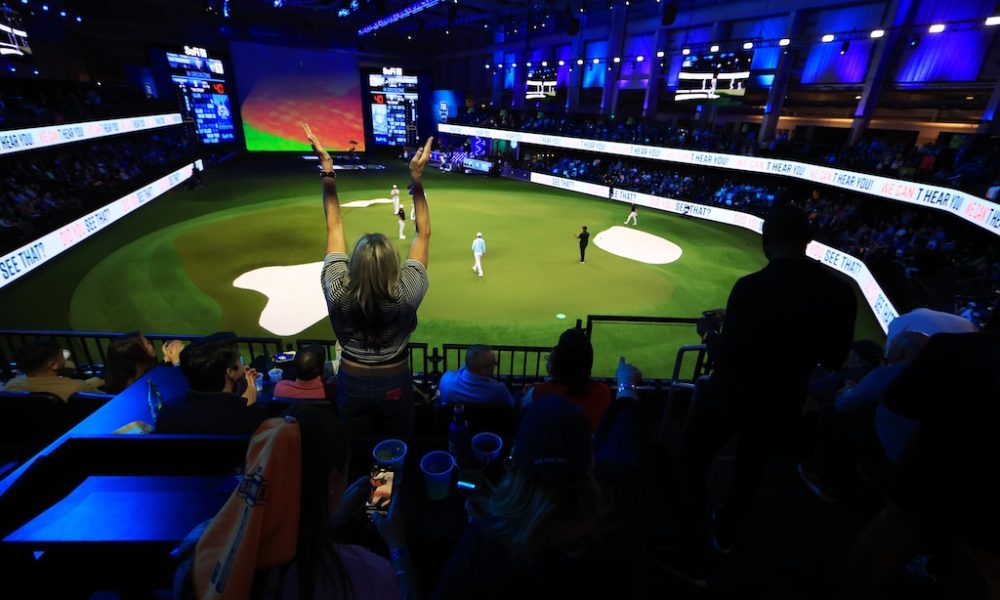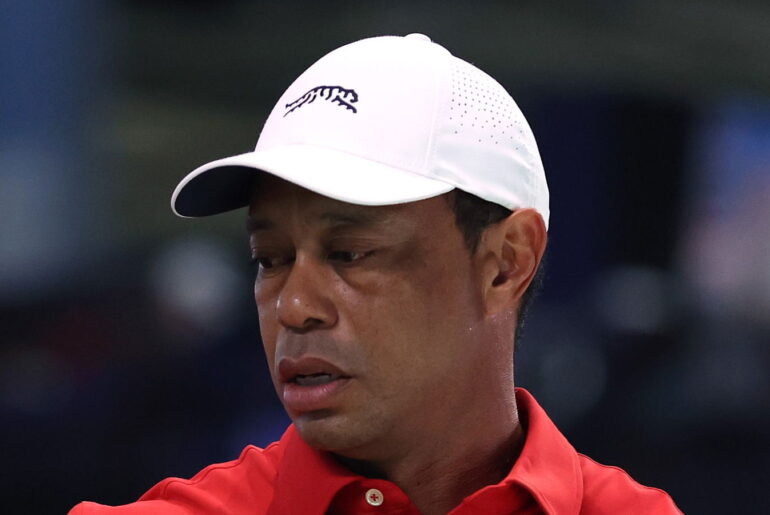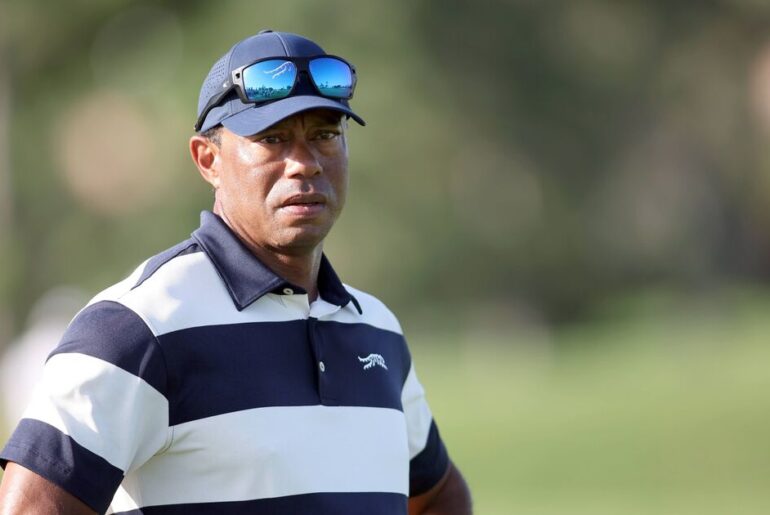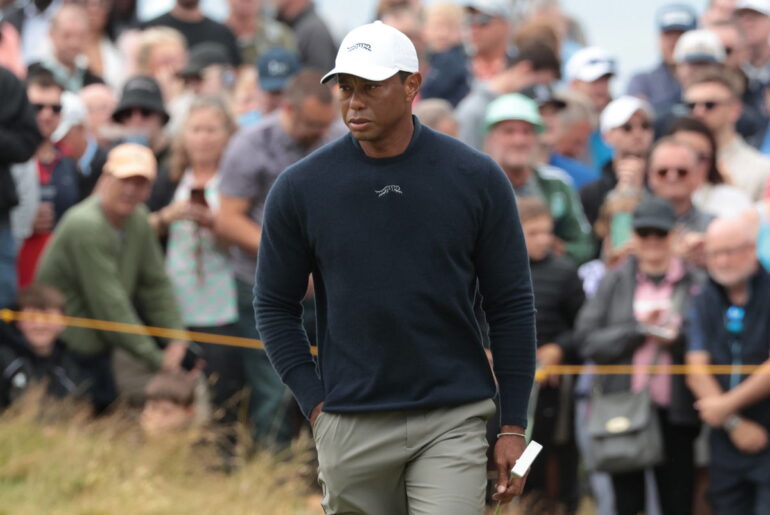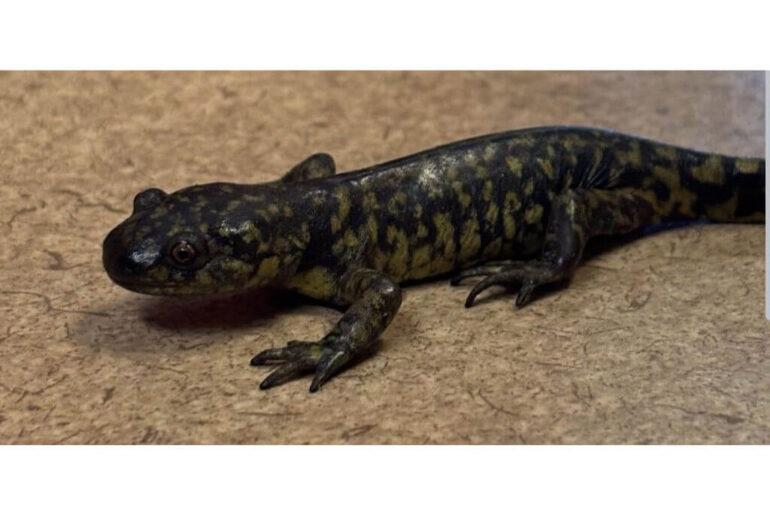Yesterday, TGL, presented by SoFi, announced a number of enhancements ahead of the second season of the indoor golf league (which begins December 28 on ABC).
Drawing on data, analytics, and player feedback from the first season, TGL renovated the GreenZone, updated hole design, increased the size of the hitting areas, and made a number of other improvements.
To get the lowdown on what’s new — and where the upstart Tiger Woods and Rory McIlroy-backed venture stands after one year — I spoke with Andrew Macaulay, Chief Technology Officer of TMRW Sports, the parent company of TGL.
Enjoy the conversation below.
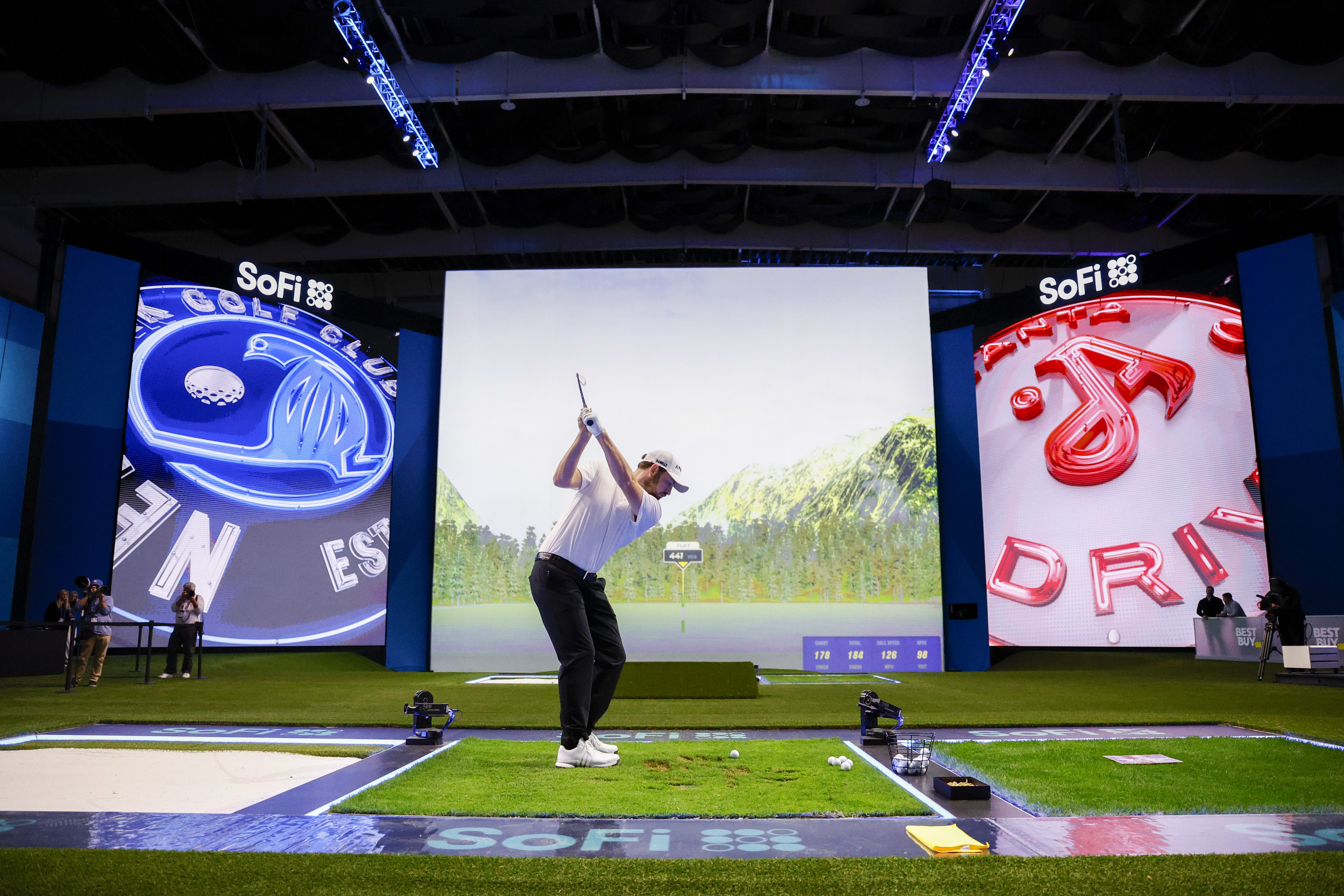
BA: Let’s go back to year one. Back further than year one, even. Take me from the initial concept to the build-out that we saw last year? You guys were building something from nothing — bringing golf, a game played on vast expanses outdoors, into a stadium setting. What was the process like of figuring out how to do that?
AM: We first started ideating, developing, and testing concepts on how to bring golf indoors on an unprecedented scale in 2022, first with Full Swing Simulators in California and then layering in Toptracer tracking in Sweden. Across the subsequent two years, extensive development and testing of TGL’s unique hybrid mix of technologies for the ScreenZone – shots into the screen – was performed at multiple locations, increasing in size from a small warehouse with low ceilings, to backlot film studios at Universal Studios Orlando, to a custom-outfitted studio in Palm Beach, and culminating with the full-scale installation at SoFi Center in the Fall of 2024.
Across that time period, we refined the hybrid ball-tracking technology, iterated on amazing virtual hole designs, developed the Skymark system to accurately transfer play from virtual world to real world, built the largest adaptable putting surface with Full Swing Virtual Greens, developed synthetic turf and underlay systems with SYNLawn that mimic real world greens like no other, designed and built a 124-foot-wide mechanical turntable that supports 250 tons, developed moveable real grass tee boxes and sand compositions for indoor use, designed proprietary layers of screen fabric to perform at massive scale, and so many other aspects of TGL’s technology.
Ultimately, TGL’s technology is a custom mix of different existing and newly built products integrated together and scaled up as never seen before, with multiple layers of redundancy to create a seamless end product. Our goal throughout was to provide the most authentic field of play and virtual environment that would meet the exacting standards of the best players in the world. And deliver the reliability needed when the physical match being played depends on the underlying technology working and working well. I’m proud of what the team has accomplished and confident in our technology stack.
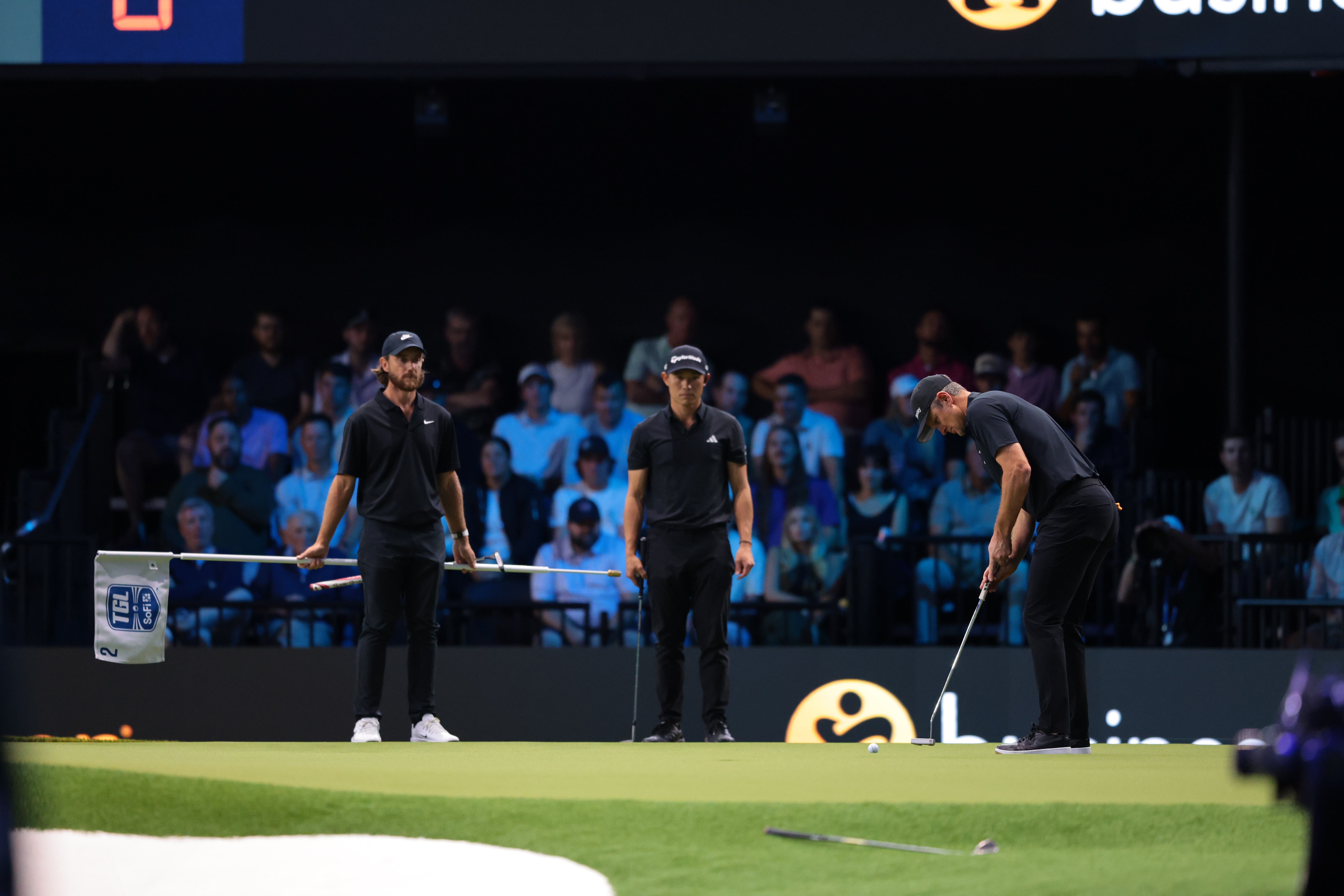
BA: In terms of the technical elements and the tracking technology, can you explain briefly for the layman how a drive is tracked and represented…
AM: There are three primary technologies that work together in tracking a specific golf ball, hit 35 yards into a projection screen, by a real elite player using a real golf club, from an actual lie in grass or sand – and converting that into a virtual world result that matches exactly what would have happened if that screen wasn’t there to stop the ball and that hole was laid out in real life in front of that player.
Toptracer optical camera sensors and software track the precise flight of the ball from the hitting boxes to screen and provide the extrapolation of the continued ball flight path as if the screen hadn’t been there to stop it. Full Swing KIT radars provide precise club and ball data from the moment of impact. And Full Swing Simulator software provides the entire TGL virtual environment, including a world-class physics engine that ensures the virtual ball, as hit by the player, interacts with objects in the simulated world just as it would do in real life.
The software also uses knowledge of the aerodynamic and performance characteristics of the specific ball being hit as part of the extrapolation algorithm. For example, a 2023 Pro V1 will fly differently than a 2025 Pro V1x if hit in the same exact way. TGL’s technology accounts for that too.
The key result of this approach is that the specific player’s golf ball can be placed, or dropped, literally anywhere on our large hitting boxes that contain real sand, real fairway height grass, and real two-inch deep rough grass. It doesn’t matter if a large cloud of sand sprays up when the ball is hit. It doesn’t matter if the ball is buried, unseen in the rough. When the ball comes out of that lie and moves, based on the way it was hit, the layers of technology work together to accurately represent the result, all the way to the final resting position of the virtual ball.
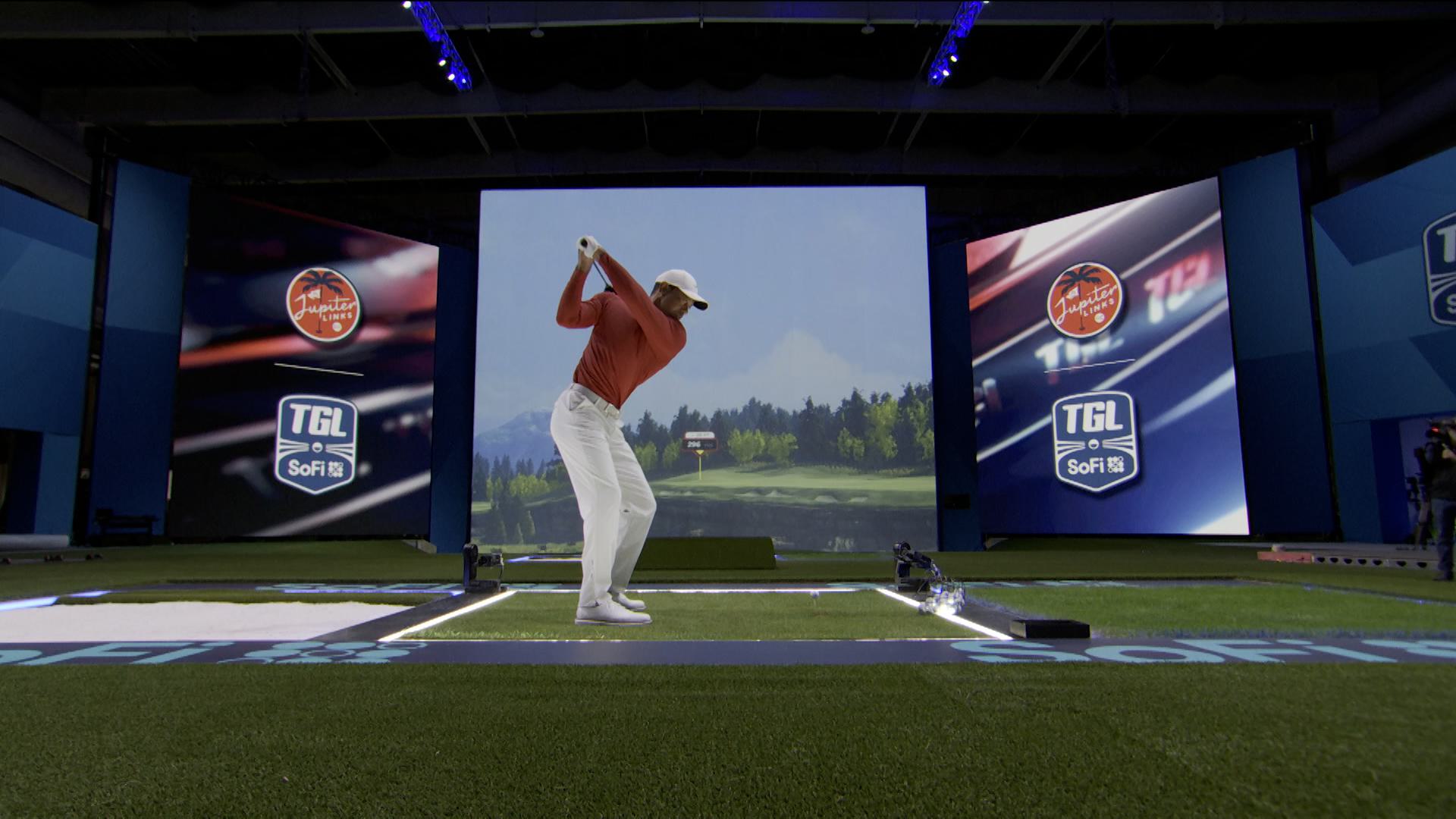
BA: Interesting. How does this change as a shot approaches the green?
AM: Every hole designed for TGL has the same basic shape of a green complex; however, within each hole, the designer can change the orientation of the whole green complex, rotate the turntable section of the green within that orientation, and adjust the topography of the putting surface – providing a wide spectrum of challenges and risk-reward decisions for teams to weigh.
Despite all these possible variations, the green complex in real life perfectly matches its virtual world counterpart for each TGL hole being played. When a ball lands on or around the green in the virtual world, it is time to move play into the real-world GreenZone, which makes up the other half of TGL’s field of play.
We developed TGL’s SkyMark technology, which takes the 3D coordinates of the ball in the virtual world and places a light at the exact same position in the real-world GreenZone, to show each team where to place their ball before continuing to finish out the hole. SkyMark also tracks data on all the shots hit in the real-world GreenZone to ensure data is collected on 100% of all shots hit in TGL at both ends of the field of play.
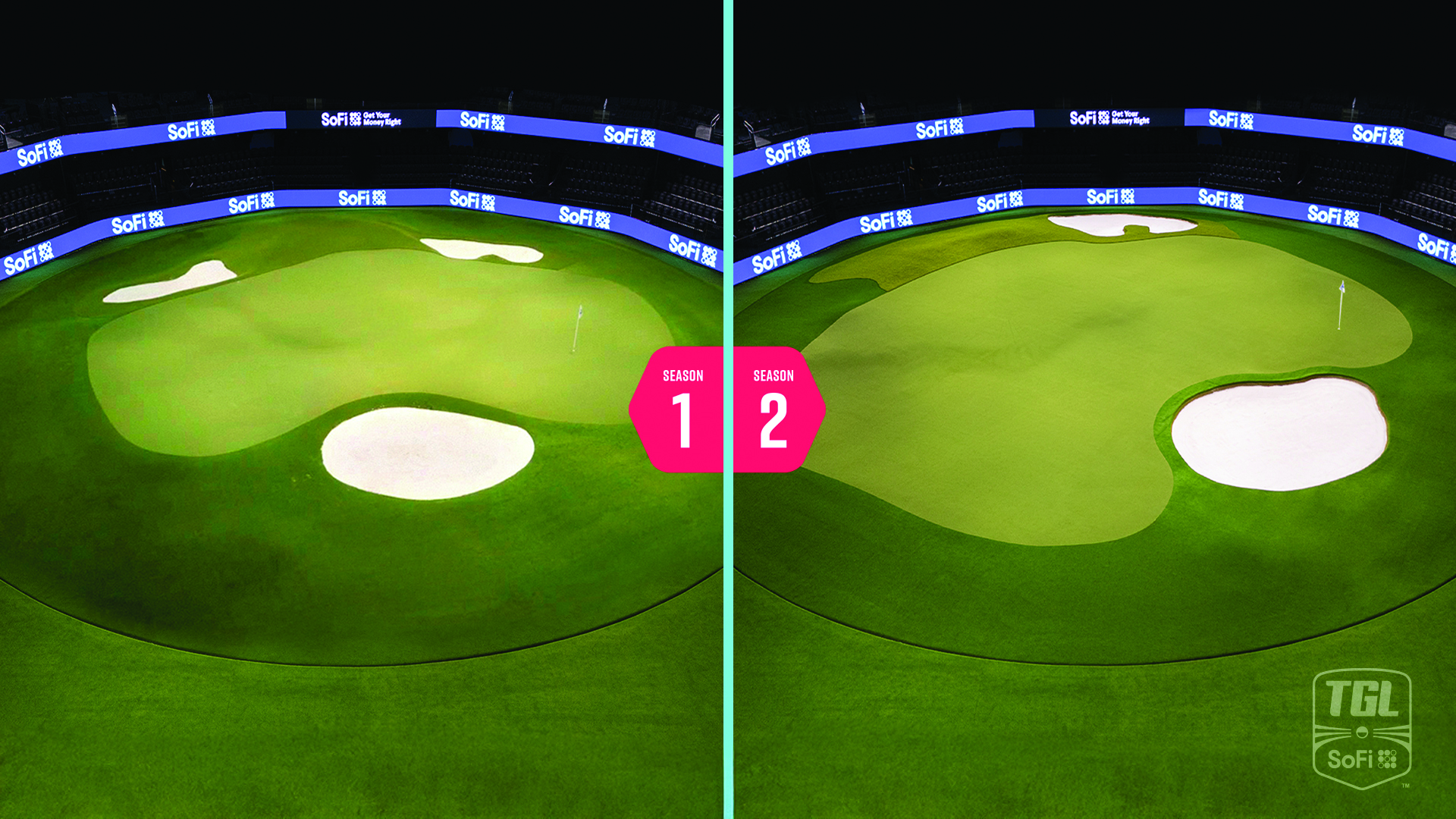
BA: And speaking of the green, TGL has enhanced the putting surface for 2026. Can you speak to that?
AM: With team match play, the green is where memorable moments are made, from dramatic chip-ins to pressure-filled putts. And this offseason, we analyzed all the data from season 1 and compiled feedback from players, teams, and our broadcast partners. The result was a green renovation to provide more excitement and further challenge to our TGL teams.
We accomplished this in several ways, including enlarging the overall putting surface, adding more pin locations, relocating and expanding the adaptable putting surface areas, making the bunkers larger while eliminating the smallest one, laying the direction of the synthetic turf differently to reduce into-the-grain lies, and regrading the slopes of the green and chipping area. For example, this season, one side of the green will have a less severe approach slope to allow for more creative shotmaking, like bump and runs, if the hole designer chooses to allow that, which adds another level of strategy for the teams to consider. Ultimately, these enhancements are designed to deliver more excitement and drama on and around the green.
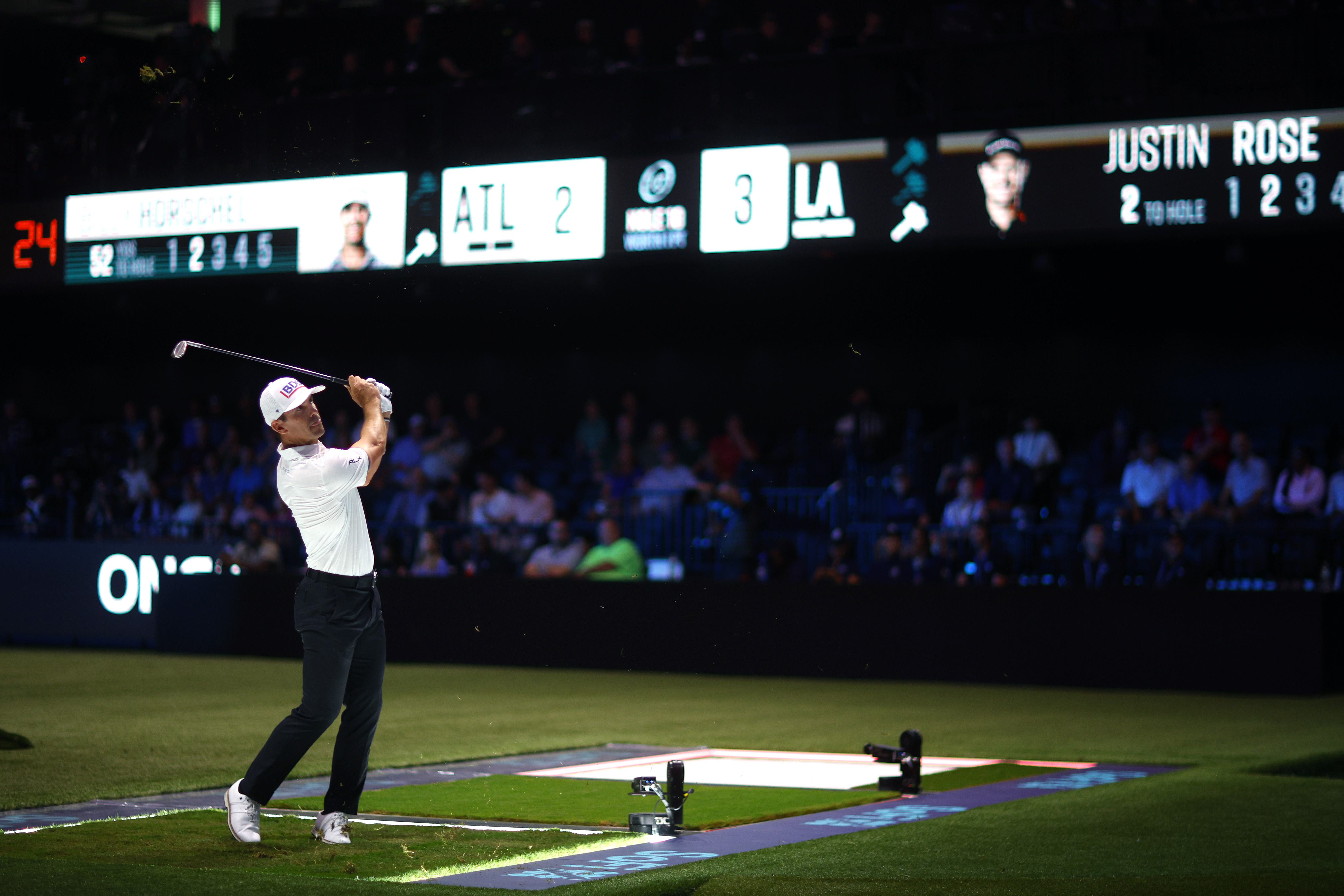
BA: What else is new for 2026?
AM: Within the ScreenZone, fans are going to notice upgraded graphics within TGL’s virtual-world holes thanks to a lot of hard work by the team at Full Swing. We also did comprehensive data analysis on hole performance in season 1 and took the virtual bulldozer to tweak some hole designs or add new tee boxes – which is a distinct advantage we have since TGL’s holes are digital and we don’t need to actually move earth to add a ravine.
The tweaks were designed to elevate the risk-reward decision-making that TGL teams face, which in turn will generate insightful strategic conversations amongst the team – an element of TGL that golf fans appreciate. We also have more to unveil with some completely new holes for season 2, which hopefully will appeal to not only fans of golf architecture but also engage broader golf and sports fans alike.

BA: How would you assess where this concept — golf played indoors in a stadium setting — is at from a technical standpoint two years in? What are your thoughts looking to the future?
AM: I’m thrilled with the results of season 1 and have full confidence in TGL from a technical and competition standpoint. As with any first-of-its-kind concept, there are always experiences to learn from, and we’re committed to adapting as we go, as you saw with the update to the Hammer rule during season 1. Obviously, all aspects of technology get better and faster over time, and we’ll take advantage of that. Fans of data and technology have a lot in store for them with TGL’s return.
I think the best compliment in the future will be that fans forget there is technology in the mix with TGL and they’re on the edge of their seat watching the action of two teams battling it out to win the match, just like any other team sport – with or without technology.
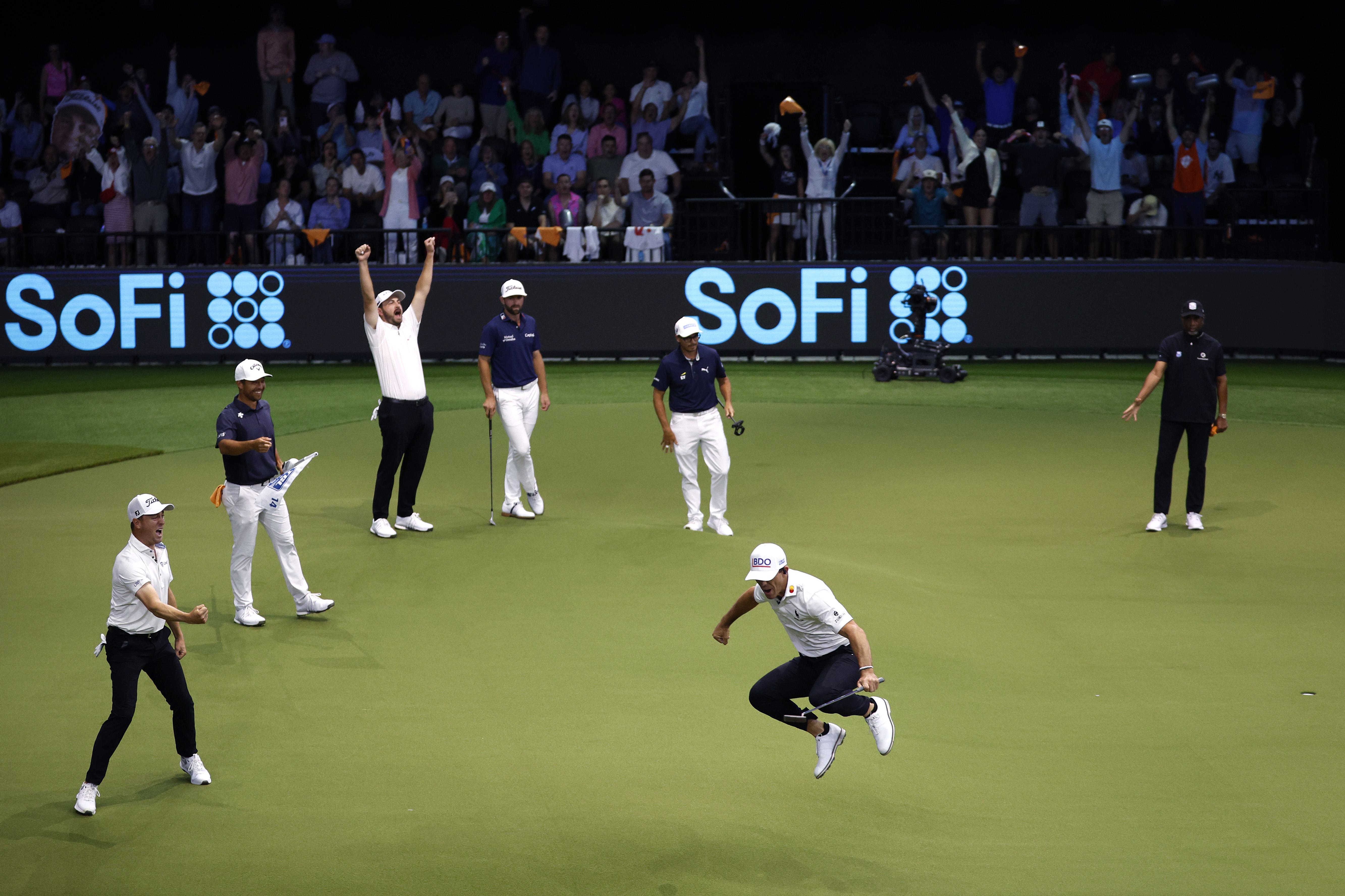
BA: This is GolfWRX, where equipment is front and center. Have you gotten any insights from the players about how anything is different in the stadium setting? Maybe clubs used around the green? Spin on approach shots? The speed of the greens? Maybe you’ve noticed something yourself in playing a few holes? Any similarities and differences?
AM: I think teams learned last season that, like any new golf course they face, taking the time to practice on the course pays dividends in performance. TGL is no different, and generally, the teams and players who took the most time practicing at SoFi Center ended up performing the best.
One difference inherent to TGL is that the putting surface is pristine. Players found it challenging to find aiming points like they do on natural grass greens with spots, slight discoloration, or pitch marks. SYNLawn, which provides our synthetic surfaces, takes great pride in providing an authentic playing surface throughout TGL’s field of play – but we have no plans to add any flaws to the green.
On the equipment front, since teams hit all their long shots from real grass and sand into the screen, the players relied on their standard sets of clubs. Dialing in their distances in our virtual world against their baselines, just like they do when they move from a course at, say, sea level one week on tour to elevation the next week.
The grass is Tahoma 31 Bermuda overseeded with rye, and is what they are used to playing on regularly on the PGA Tour during the Florida Swing. They also depended on their regular putter for TGL. However, where we saw the most experimentation was with the wedges and players trying to optimize their wedge set-ups. As you would see week in and week out on the PGA Tour, players will test different wedges to find the ideal combination of bounce and grooves that work the best on that particular playing surface.
Your Reaction?LIKE0LEGIT1WOW0LOL0IDHT0FLOP0OB0SHANK0

